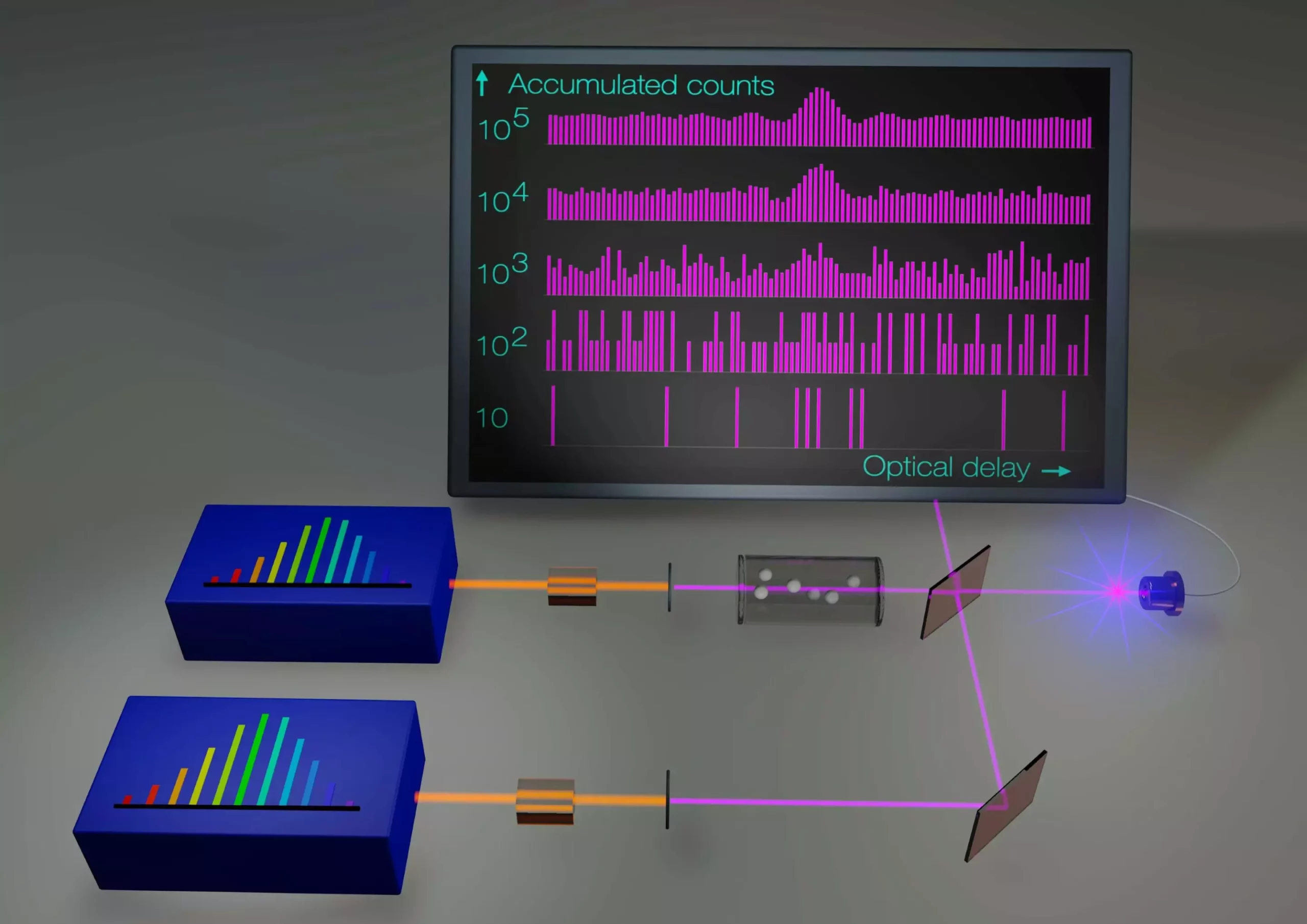Ultraviolet spectroscopy has long been a critical tool in the study of electronic transitions in atoms and rovibronic transitions in molecules. However, recent advancements in the field have led to groundbreaking achievements that expand the possibilities of this powerful technique. Scientists at the Max-Planck Institute of Quantum Optics have made significant progress in the field of ultraviolet spectroscopy by successfully implementing high-resolution linear-absorption dual-comb spectroscopy in the ultraviolet spectral range.
Dual-comb spectroscopy has emerged as a powerful technique for precise spectroscopy over broad spectral bandwidths. Traditionally used for infrared linear absorption of small molecules in the gas phase, dual-comb spectroscopy relies on measuring the time-dependent interference between two frequency combs with slightly different repetition frequencies. This innovative technique offers great potential for high precision and accuracy, without the geometric limitations associated with traditional spectrometers.
One of the main limitations of dual-comb spectroscopy has been the requirement for intense laser beams, making it less suitable for scenarios where low light levels are critical. However, the MPQ team has successfully demonstrated that dual-comb spectroscopy can be effectively employed in starved-light conditions at power levels more than a million times weaker than those typically used. This significant breakthrough opens up new possibilities for experiments in challenging scenarios where low light levels are essential.
The MPQ researchers addressed the challenges associated with generating ultraviolet frequency combs and building dual-comb interferometers with long coherence times. By developing a photon-level interferometer that accurately records the statistics of photon counting, the team achieved a signal-to-noise ratio at the fundamental limit. This achievement showcases the optimal use of available light for experiments and opens up new possibilities for dual-comb spectroscopy in a variety of scientific and technological fields.
The development of dual-comb spectroscopy at short wavelengths holds great promise for the future of spectroscopic research. With the ability to enable precise vacuum- and extreme-ultraviolet molecular spectroscopy over broad spectral spans, this innovative approach has the potential to revolutionize the field of ultraviolet spectroscopy. By extending the capabilities of dual-comb spectroscopy to low-light conditions, novel applications in precision spectroscopy, biomedical sensing, and environmental atmospheric sounding are now within reach.
The groundbreaking achievements in ultraviolet spectroscopy by the MPQ team represent a significant step forward in the field of spectroscopic research. The ability to perform high-resolution linear-absorption dual-comb spectroscopy in the ultraviolet spectral range under low-light conditions opens up new possibilities for experimentation and research. With the potential for applications in a wide range of scientific and technological fields, the future of ultraviolet spectroscopy looks brighter than ever before.


Leave a Reply